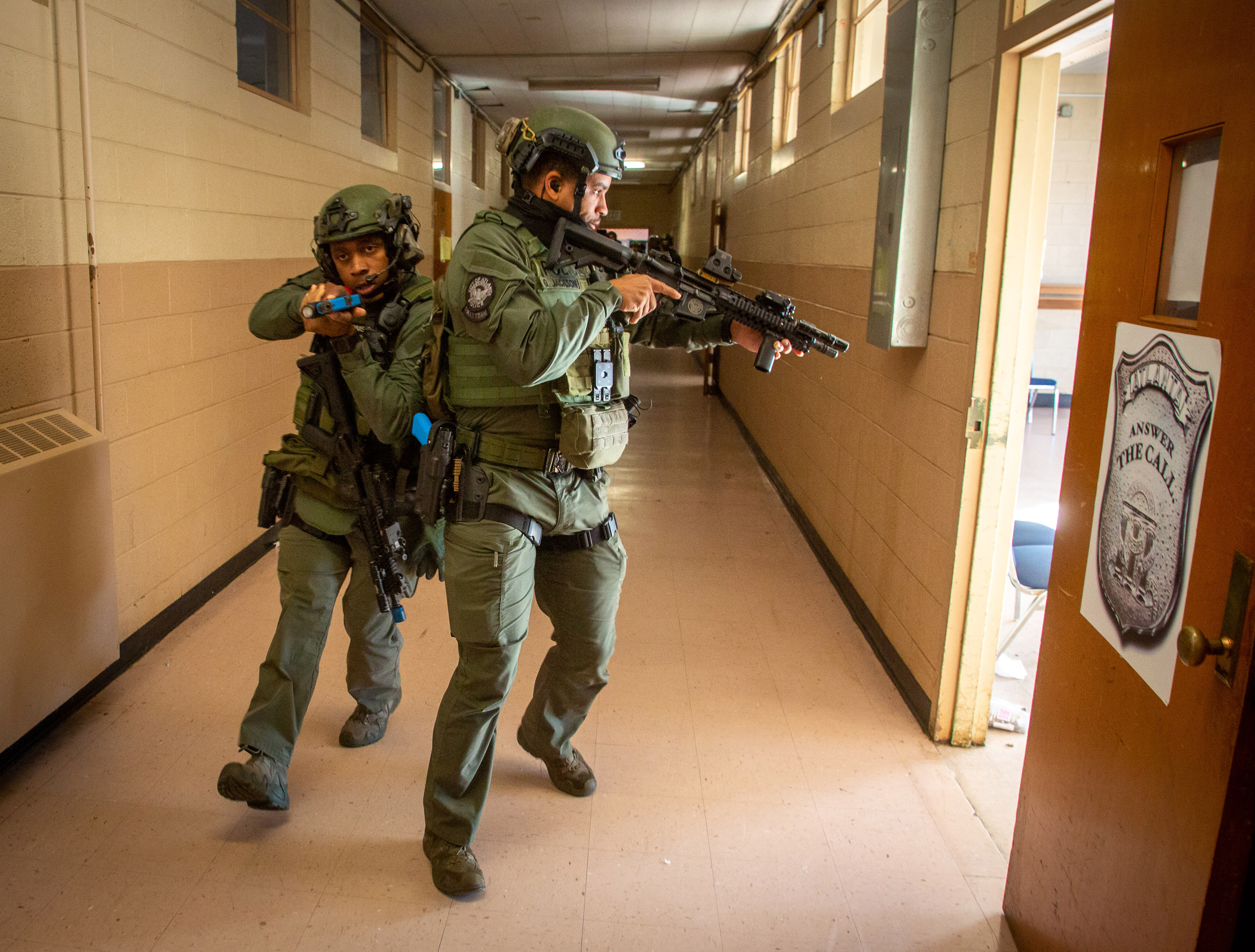Exploring the Trick Elements and Objectives of Efficient Active Shooter Training Programs
Energetic shooter training programs are critical in gearing up individuals and organizations with the necessary skills to react effectively to possible threats. These programs integrate important parts, such as the "Run, Hide, Battle" approach, practical scenario simulations, and interaction procedures, fostering an environment of readiness. They emphasize emotional durability to assist participants navigate high-stress scenarios. active shooter training. As we check out the details of these training programs, it comes to be obvious that comprehending their extensive nature is important to enhancing precaution and response capacities. What details components truly define their performance?
Value of Energetic Shooter Training
Active shooter training programs are crucial for improving readiness and feedback despite potential risks. These programs intend to equip people, organizations, and communities with the knowledge and skills needed to properly reply to energetic shooter circumstances. The raising frequency and seriousness of such occurrences underscore the relevance of aggressive steps, as timely and educated responses can substantially alleviate damage.

Additionally, these programs can assist relieve the stress and anxiety and fear that usually come with discussions concerning potential threats. By supplying organized advice and sensible approaches, individuals gain confidence in their ability to respond properly. Eventually, the significance of energetic shooter training hinges on its prospective to save lives, lower injuries, and grow a prepared and durable neighborhood efficient in encountering unexpected challenges.
Key Elements of Training Programs
Reliable active shooter training programs typically incorporate several vital components developed to prepare individuals for real-world circumstances. The first element is extensive education and learning on the nature of active shooter occurrences, including statistics, instance researches, and mental elements that influence assailants. This academic foundation is important for promoting recognition and understanding amongst individuals.
Following, programs commonly consist of training on personal precaution, highlighting the "Run, Hide, Battle" technique. Participants learn just how to analyze their setting, make quick choices, and take suitable actions during a crisis. Additionally, the addition of effective interaction skills is important, as participants should comprehend exactly how to report occurrences and share crucial info with law enforcement.
An additional essential component is the involvement of regulation enforcement or safety specialists, who supply understandings into tactical feedbacks and the value of teamwork during a dilemma. Moreover, programs ought to address the psychological after-effects of an active shooter situation, offering strategies for dealing and healing.
Last but not least, ongoing training and correspondence course are critical to guarantee that understanding stays present and individuals feel positive in their capacities. Together, these vital components produce an all-around training program that gears up learn this here now people to respond properly to an active shooter occasion.
Realistic Situation Simulations
Practical situation simulations are an important facet of active shooter training programs, providing individuals with the chance to take part in hands-on technique that mirrors possible real-life scenarios. These simulations boost the training experience by developing an immersive setting where individuals can use academic understanding in functional setups.
Via the usage of role-playing, simulated scenarios, and specialized training centers, individuals experience the immediate challenges and stressors associated with an energetic shooter incident. This technique of training advertises quick decision-making, team effort, and the application of security protocols under stress. It allows responders to create vital abilities such as situational recognition, danger analysis, and efficient discharge procedures.
Furthermore, reasonable simulations help to determine possible weak points in individuals' reactions, making it possible for instructors to provide targeted responses and improve general readiness. The incorporation of varying situations, including various locations and assailant accounts, further enhances the training experience, guaranteeing that individuals are fully equipped to deal with a variety of prospective situations.
Inevitably, these simulations offer not only to instruct however likewise to develop self-confidence among participants, promoting a sense of readiness that is important for reliable emergency feedback when faced with an active shooter threat. active shooter training.
Interaction Techniques in Training
Clear interaction is essential in active shooter training programs, as it directly influences the efficiency of reaction initiatives during a dilemma. Training individuals should comprehend the protocols and procedures that will assist their actions if faced with an energetic shooter situation. Establishing clear lines of communication makes sure that all individuals entailed can pass on info quickly and accurately.

In addition, training programs ought to stress the significance of active listening. Ultimately, efficient communication techniques are vital for preparing individuals to react decisively and cohesively in the face of an energetic shooter occurrence.
Psychological Preparedness Methods
Emotional preparedness techniques are significantly identified as vital parts of energetic shooter training programs. These methods aim to gear up people with the mental strength essential to respond properly in high-stress circumstances. By promoting a way of thinking attuned to prospective hazards, individuals can much better manage concern, stress and anxiety, and complication during important cases.
Secret mental preparedness methods include scenario-based training and anxiety shot exercises. Scenario-based training immerses participants in sensible simulations that simulate the turmoil of an active shooter event, allowing them to practice decision-making under stress. This direct exposure aids build familiarity with emergency situation procedures, enhancing natural responses.
Stress shot involves gradual direct exposure to stress-inducing circumstances, allowing individuals to establish coping mechanisms. This can include breathing exercises, visualization methods, and cognitive restructuring to reframe adverse ideas. By integrating these methods, training programs can cultivate a feeling of confidence and control, which is crucial in situation situations.
Additionally, post-incident emotional support is essential to address the emotional aftermath of an active shooter event. Including psychological health and wellness resources right into training programs not just prepares people for prompt feedbacks but additionally promotes long-term mental well-being, eventually adding to a more secure and extra resilient setting.
Verdict

Comments on “The Significance of Active Shooter Training in High-Risk Environments”